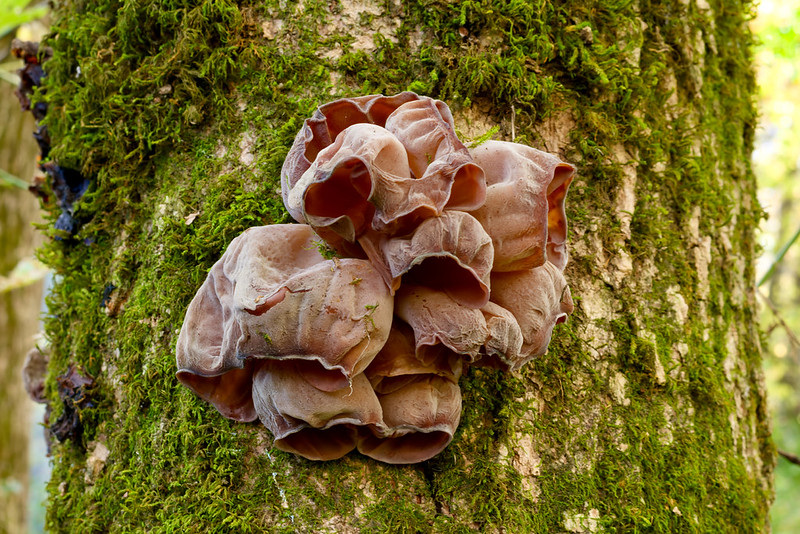I photographed this Wood Ear fungus near the Buffalo National River in Arkansas on a damp morning. The moss-covered tree trunk made the perfect backdrop for this jelly-like growth, which seemed to glow in the soft forest light.

Wildlife Notes on Wood Ear Fungus
Wood Ear fungus (Auricularia americana) is a common sight on decaying hardwoods throughout the Ozarks and Arkansas woodlands. The name comes from its ear-shaped folds that resemble a human ear when viewed from the side. When fresh, the fungus feels jelly-like and flexible. During dry spells, it shrinks and hardens, then rehydrates after rain.
I found this cluster on a dying hardwood, likely oak or hickory based on the bark texture beneath the moss. Wood Ear fungi are saprobic, feeding on decaying wood and helping recycle nutrients back into the forest soil. They appear most often in spring and fall when moisture levels are high but can grow year-round in damp river valleys.
The deep purples and browns here show fresh growth. As they age, these fungi fade to pale tan or gray. Based on color and texture, this cluster was probably just a few days old.
Wood Ear fungus is edible and popular in Asian cooking, known as “cloud ear” or “tree ear.” Even so, I always photograph rather than harvest, identification in the field must be certain before considering any wild mushroom edible.
If you’re interested in another striking woodland species, check out my post on the Orange Mock Oyster Mushroom in the Ouachita Forest. It shows how diverse Arkansas fungi can be in color and texture.
Photography Notes
I used my Fujifilm X100VI with the fixed 23mm f/2 lens for this shot. The close focusing ability of the X100VI allowed me to get within a foot of the subject while keeping the entire fungus cluster sharp.
Camera Settings:
- Camera: Fujifilm X100VI
- Lens: 23mm f/2
- Aperture: f/8
- Shutter Speed: 1/27 second
- ISO: 800
- Exposure Compensation: -0.33
I chose f/8 to ensure adequate depth of field across the entire cluster while keeping the moss-covered bark reasonably sharp. The slower shutter speed of 1/27 second required me to brace against a nearby tree to avoid camera shake. I dialed in -0.33 exposure compensation to prevent the bright green moss from blowing out the highlights and to preserve the rich tones in the fungus itself.
The morning light was indirect and soft, which worked perfectly for this subject. Harsh sunlight would have created distracting shadows in the fungal folds and washed out the subtle color variations. I positioned myself to keep the background slightly out of focus, emphasizing the textured moss and the fungus without competing elements.
Handheld shooting in low light with the X100VI is manageable thanks to the camera’s effective stabilization, but I still took multiple frames to ensure at least one was tack sharp. The fixed lens meant I had to move closer rather than zoom, which actually helped me find the best angle.
Moments like this remind me why I enjoy exploring quiet corners of the Ozarks. The Wood Ear fungus might be small and easy to overlook, but its strange form and soft texture show just how much beauty hides in the damp shade of an Arkansas forest.
